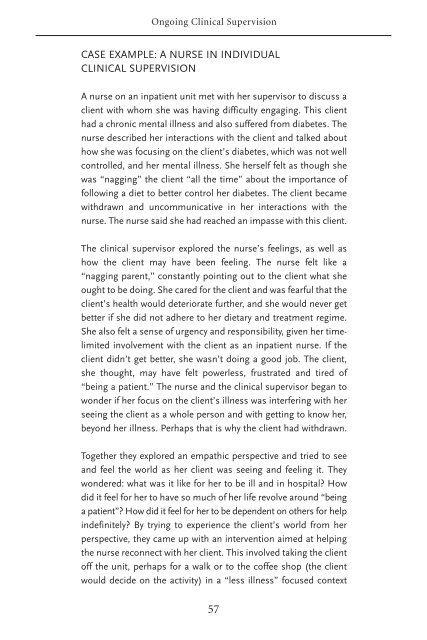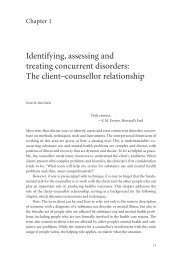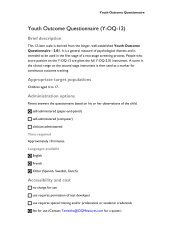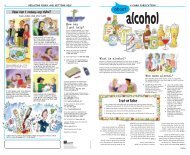Clinical Supervision Handbook - CAMH Knowledge Exchange ...
Clinical Supervision Handbook - CAMH Knowledge Exchange ...
Clinical Supervision Handbook - CAMH Knowledge Exchange ...
You also want an ePaper? Increase the reach of your titles
YUMPU automatically turns print PDFs into web optimized ePapers that Google loves.
Ongoing <strong>Clinical</strong> <strong>Supervision</strong><br />
CASE EXAMPLE: A NURSE IN INDIVIDUAL<br />
CLINICAL SUPERVISION<br />
A nurse on an inpatient unit met with her supervisor to discuss a<br />
client with whom she was having difficulty engaging. This client<br />
had a chronic mental illness and also suffered from diabetes. The<br />
nurse described her interactions with the client and talked about<br />
how she was focusing on the client’s diabetes, which was not well<br />
controlled, and her mental illness. She herself felt as though she<br />
was “nagging” the client “all the time” about the importance of<br />
following a diet to better control her diabetes. The client became<br />
withdrawn and uncommunicative in her interactions with the<br />
nurse. The nurse said she had reached an impasse with this client.<br />
The clinical supervisor explored the nurse’s feelings, as well as<br />
how the client may have been feeling. The nurse felt like a<br />
“nagging parent,” constantly pointing out to the client what she<br />
ought to be doing. She cared for the client and was fearful that the<br />
client’s health would deteriorate further, and she would never get<br />
better if she did not adhere to her dietary and treatment regime.<br />
She also felt a sense of urgency and responsibility, given her timelimited<br />
involvement with the client as an inpatient nurse. If the<br />
client didn’t get better, she wasn’t doing a good job. The client,<br />
she thought, may have felt powerless, frustrated and tired of<br />
“being a patient.” The nurse and the clinical supervisor began to<br />
wonder if her focus on the client’s illness was interfering with her<br />
seeing the client as a whole person and with getting to know her,<br />
beyond her illness. Perhaps that is why the client had withdrawn.<br />
Together they explored an empathic perspective and tried to see<br />
and feel the world as her client was seeing and feeling it. They<br />
wondered: what was it like for her to be ill and in hospital? How<br />
did it feel for her to have so much of her life revolve around “being<br />
a patient”? How did it feel for her to be dependent on others for help<br />
indefinitely? By trying to experience the client’s world from her<br />
perspective, they came up with an intervention aimed at helping<br />
the nurse reconnect with her client. This involved taking the client<br />
off the unit, perhaps for a walk or to the coffee shop (the client<br />
would decide on the activity) in a “less illness” focused context<br />
57

















